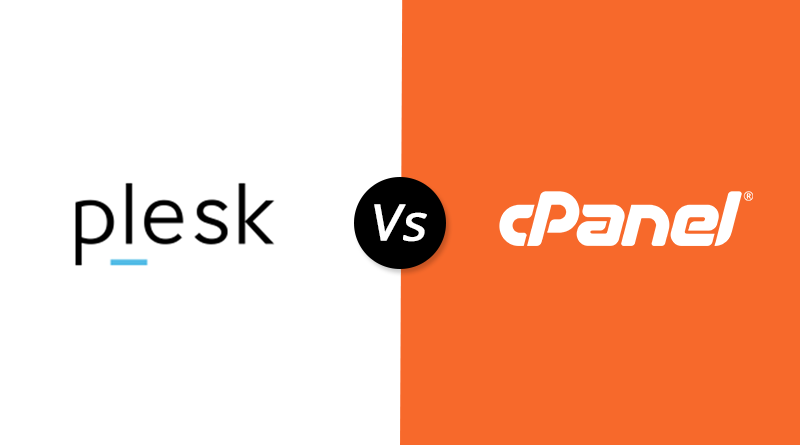Built your business website and now ready to host it on the server? Web hosting plays a significant role in making your website available to all. Being a web hosting user, you will be spending much of your time in directly interacting with your site. But, you might face a situation wherein you will need full access to your server. How will you get that? Don’t worry it is possible to get the complete access to your server with a control panel.
While you manage the server for your website, you search for something that allows you to perform the tasks you want to, with less efforts and complications.
This actually means selecting a control panel even if you can complete all the server-related tasks via a command line interface.
You will find several web hosts include a control panel with some of their web hosting packages. But in other cases or packages, you have to purchase the control panel as an add-on. Currently, the two popular and commonly-offered control panel options are Plesk and cPanel.
Both of these are the leading players in the server management market, so you can surly opt for them. But which one should you select between them and how they are similar or how they are different?
Let’s take a look at their features and what makes them different from each other.
cPanel Control Panel Overview:
A Linux-based control panel, cPanel offers automation tools and GUI for allowing users to easily manage their websites as well as hosting accounts. cPanel was released in 1996 by Nick Koston and is one of the biggest players and has several legacy users globally. The latest version of cPanel is cPanel 72 that was released on June 13th, 2018. The modern versions of cPanel comprise of combination of cPanel and WHM interfaces where the former is for customer account management and the later is for server management.
Plesk Control Panel Overview:
Plesk control panel was introduced in 2001 and is an instinctive, multi-level web hosting control panel which offers access to the users as per their needs, giving them full control on their websites. It also caters the server administrators with a wide range of options to build and maintain their hosting business and offers valuable services both on Linux as well as Windows servers. The latest version of Plesk is Plesk Onyx.
cPanel VS Plesk – What’s the Difference?
User Interface
The cPanel interface comprises of the features and tools that are a bit confusing and often seen as being more cluttered. It allows customisation of the home screen for making it easier to find things as well. The graphical interface enables users to access and manage PGP keys, FTP accounts, mailing lists and more from the front end.
It consists of a command line and offers API based access that performs the administration tasks automatically.
But if you want to create sub-accounts, it is a tricky task since it doesn’t give you an access to complete panel.
Plesk offers a cleaner graphical user interface (GUI) and is a bit easier to use as compared to cPanel. The features in Plesk are grouped in a list down at the left-hand side. When you click on the list, it expands to show further options. The UX/UI of Plesk is completely redesigned with modern JavaScript technology usage. Ultimately, Plesk offers user-friendly interface and ready to code environment with JavaScript, PHP, Perl, Python, Ruby, Java and .NET support. Users get role based access across all devices.
Performance
In general, cPanel loads faster than Plesk as it is a web hosting control panel that actually focuses performance optimization. The amount spent on the memory required was reduced by the cPanel developers and so they were able to improve the page-load times within the panel along with achieving faster time for account creation and other server management tasks.
Features and tools
Both cPanel and Plesk offer users the primary features for server and account management. You can configure DNS settings, run FTP (File Transfer Protocol), manage email accounts and databases with both control panels. It is possible to add extra apps to cPanel but Plesk comes with support for more useful apps and extensions straight from the box.
Plesk offers support for Docker on Linux, with a list of over 200,000 Docker images that are possible to be launched from within the Plesk web hosting control panel. It is also attuned with Git through the Gitman extension. You can find the processes to get Docker and Git running with cPanel, but it is highly complex as compared to Plesk.
Security
cPanel and Plesk, both control panels greatly focus on security. Though both vary in terms of features, they come with several security tools. cPanel offers automatic installation of SSL certificate, IP address denials and password protected directories for security. But note that cPanel takes days to implement a security issue.
Plesk offers a wide range of security features and extensions (free as well as commercial) such as Fail2ban intrusion prevention, active directory integration and, inbound and outbound email antispam. It also provides patches for PHP or apps like WordPress generally within 24 hours at a faster speed as compared to cPanel.
Distros
cPanel and Plesk significantly differ in terms of distros. Plesk is available on both Linux distributions and Windows server while cPanel is available only on Linux operating system. Surely, you can cPanel on Windows servers via some backdoor methods.
cPanel supports the Linux distributions such as CentOS, CloudLinux and RedHat Enterprise Linux operating systems. While Plesk supports 14 Linux distributions including CentOS, Ubuntu and Debian, as well as Windows server.
Ease of Migration
The biggest and ignored difference between cPanel and Plesk is the website migration from one server to another.
With both the control panels you can easily migrate a website from one server to another with an assumption that you are moving your website through the same control panel.
It is hardly possible to move from one control panel to the other.
After you have selected a particular control panel, it is always better to continue with it.
With cPanel you get migration tools and technical help for transferring your website from third-party control panels to cPanel & WHM. But you may face some issues and concerns in the data migration process.
Plesk has its own migration system to migrate a website from one server to another. It’s very easy to move from one Plesk on old server to another Plesk on new server.
Support
Of course, both the control panels offer award-winning support. In case you have any queries, comments or concern about cPanel or Plesk their support teams will always assist you. You can contact the Plesk team at any time as they are available 24/7. But the cPanel team is available as below:
• Monday to Friday from 6 AM to 6 PM Central Standard Time (GMT – 6)
• Saturday to Sunday from 6 AM to 4 PM Central Standard Time (GMT – 6)
Selecting Between Plesk and cPanel
It can be assumed that most key Linux- or Windows-based web server/website administrative suites are packed with all the features required to manage your hosting account as well as website. cPanel and Plesk are similar to them.
But, note that these two products are quite different from each other. So, when you want to decide on whether you to select cPanel or Plesk, you should consider the below things:
• Migration experience
• User experience/user interfaces
• Cost
• Feature sets
• Compatibility
Final Words
In general, selecting any one of them won’t be a wrong decision. If you have already opted for one, it is better to stay with it. If you are just stating then using a non-Linux hosting environment or if you want something that is easy-to-use, you can opt for Plesk over cPanel. Lastly, it’s your decision.




